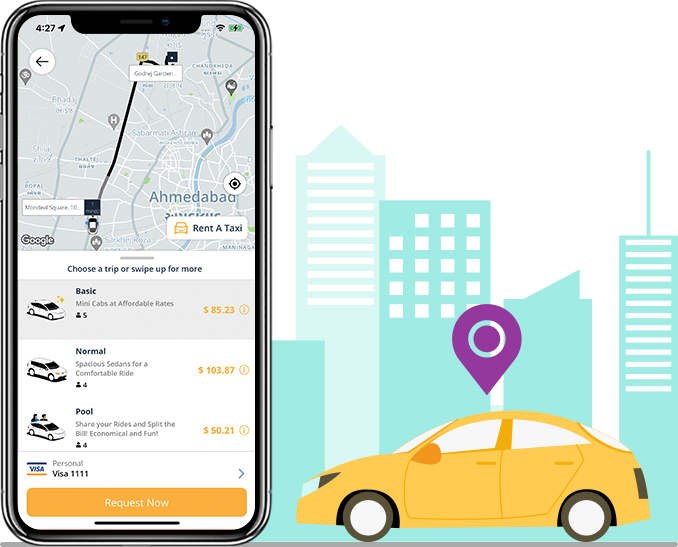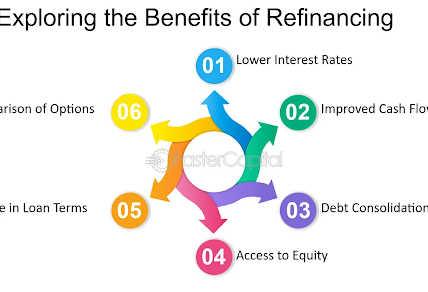Introduction
The landscape of the transportation industry has seen a significant transformation over the past decade with the introduction of ride-sharing apps like Uber and Lyft. These apps have set new standards for convenience, effectiveness, and user experience. As technology advances, Artificial Intelligence (AI) has become a key component driving the next wave of innovation in ride-sharing apps. AI-powered features not only improve operational efficiency but also increase user pleasure by providing individualized, dependable, and secure services. In this article, we will examine the key AI-powered features that are necessary for Uber-like app development.
1. Smart Matching Algorithms
1.1 Dynamic Pricing Models
Dynamic pricing, also known as surge pricing, adjusts fares based on real-time demand and supply. AI algorithms analyze historical data, current demand, and supply conditions to set optimal prices. This ensures that drivers are incentivized to be available during peak times, and customers can find rides even during high-demand periods. Machine learning models predict the ideal fare by considering factors such as time of day, weather conditions, and local events.
1.2 Optimized Driver-Partner Matching
AI-powered algorithms play a crucial role in matching riders with the most suitable drivers. These algorithms consider multiple factors, including driver location, current traffic conditions, and historical trip data to minimize wait times and improve overall efficiency. For instance, an AI system can predict where and when ride requests are likely to surge and proactively position drivers in those areas.
2. Predictive Analytics for Demand Forecasting
2.1 Historical Data Analysis
Predictive analytics leverage historical data to forecast future demand patterns. By analyzing past ride requests, AI can identify trends and predict peak times, enabling the app to prepare adequately. For example, during major events or holidays, demand typically spikes, and predictive analytics help ensure that sufficient drivers are available to meet the increased demand.
2.2 Real-Time Data Integration
Integrating real-time data with historical data allows for more accurate demand forecasting. This involves using AI to continuously monitor and analyze data from various sources such as traffic conditions, weather forecasts, and local events. Real-time adjustments can then be made to driver deployment strategies, ensuring optimal availability and reducing wait times for riders.
3. Enhanced Route Optimization
3.1 Real-Time Traffic Analysis
AI-powered route optimization systems analyze real-time traffic data to find the quickest and most efficient routes. These systems consider current traffic conditions, road closures, and accidents to suggest alternative routes, thereby reducing travel time and fuel consumption. This feature not only enhances user satisfaction by ensuring timely arrivals but also helps drivers maximize their earnings by completing more rides.
3.2 Machine Learning for Predictive Routing
Machine learning algorithms can predict future traffic conditions based on historical data, current trends, and external factors like weather or special events. This predictive capability allows the app to suggest optimal routes even before traffic congestion occurs, further improving the efficiency and reliability of the service.
4. Personalization and User Experience
4.1 Personalized Ride Recommendations
AI can analyze user behavior and preferences to offer personalized ride recommendations. For instance, frequent users might receive suggestions for carpooling options or premium ride services based on their past choices. Personalized notifications about promotions, discounts, and ride options enhance the user experience and foster customer loyalty.
4.2 Customized Communication
AI-driven chatbots and virtual assistants can handle customer inquiries and provide personalized responses. These systems use natural language processing (NLP) to understand user queries and offer relevant solutions, such as booking a ride, providing fare estimates, or resolving issues. This feature ensures 24/7 customer support and significantly reduces response times.
5. Safety and Security Enhancements
5.1 Real-Time Monitoring and Alerts
AI-powered monitoring systems enhance rider and driver safety by tracking rides in real time. These systems can detect unusual patterns or deviations from the expected route and send alerts to both the rider and a central monitoring team. This feature helps in quickly addressing potential safety issues and ensuring a secure ride experience.
5.2 Driver Background Checks
Machine learning algorithms can streamline the driver vetting process by analyzing background check data more efficiently. AI can cross-reference multiple databases to verify driver credentials, driving history, and criminal records. This automated process ensures that only qualified and trustworthy drivers are approved, enhancing overall safety.
5.3 Facial Recognition and Biometric Authentication
Incorporating facial recognition and biometric authentication adds an extra layer of security. These technologies can be used to verify driver identities before every trip, ensuring that only the authorized driver is operating the vehicle. This reduces the risk of fraud and enhances trust between riders and the service.
6. Predictive Maintenance for Vehicles
6.1 Condition Monitoring
AI-powered predictive maintenance systems monitor vehicle conditions in real time by analyzing data from various sensors. These systems can predict potential mechanical failures before they occur, allowing for timely maintenance and reducing downtime. This ensures that the fleet remains in optimal condition, providing a reliable service to users.
6.2 Maintenance Scheduling
AI algorithms can optimize maintenance schedules based on usage patterns and vehicle health data. By predicting when a vehicle will require maintenance, the app can schedule services during off-peak hours, minimizing disruption to operations. This proactive approach helps maintain a high level of service reliability and reduces operational costs.
7. Efficient Fleet Management
7.1 Dynamic Fleet Allocation
AI-driven fleet management systems dynamically allocate vehicles based on real-time demand and supply analysis. These systems optimize the distribution of vehicles across different areas to ensure balanced coverage and reduce idle time for drivers. This feature improves resource utilization and enhances service efficiency.
7.2 Fuel Efficiency Optimization
Machine learning models can analyze driving patterns and suggest fuel-efficient routes and driving behaviors. This helps reduce fuel consumption and operational costs. Additionally, AI can provide insights into the optimal times for refueling, ensuring that vehicles are always ready for service.
8. Fraud Detection and Prevention
8.1 Anomaly Detection
AI algorithms can detect fraudulent activities by analyzing transaction patterns and identifying anomalies. For instance, unusual ride patterns or payment activities can trigger alerts for further investigation. This proactive approach helps in preventing fraudulent activities and maintaining the integrity of the platform.
8.2 User and Driver Verification
AI-powered verification processes ensure that both users and drivers are genuine and trustworthy. This includes using facial recognition, document verification, and behavioral analysis to detect and prevent fraudulent accounts. By maintaining a secure and trustworthy user base, the app can offer a safer and more reliable service.
9. Seamless Payment Integration
9.1 Secure Payment Processing
AI ensures secure and efficient payment processing by detecting and preventing fraudulent transactions. Machine learning models analyze payment patterns to identify potential threats and ensure that transactions are legitimate. This feature enhances user trust and protects against financial losses.
9.2 Personalized Payment Options
AI can offer personalized payment options based on user preferences and behavior. For example, frequent users might prefer automatic payments, while others may opt for manual confirmations. Providing flexible payment options enhances user convenience and satisfaction.
10. Driver Assistance and Training
10.1 In-App Training Modules
AI-powered training modules can help drivers improve their skills and knowledge. These modules can be personalized based on the driver’s performance and feedback. For instance, drivers can receive training on efficient driving techniques, customer service, and safety protocols.
10.2 Real-Time Assistance
AI-driven systems can provide real-time assistance to drivers, offering suggestions for optimal routes, traffic updates, and tips for improving service quality. This helps drivers perform their tasks more efficiently and enhances the overall user experience.
Conclusion
The integration of AI-powered features in an Uber-like app is essential for remaining competitive in the quickly changing ride-sharing market. From smart matching algorithms and predictive analytics to improved safety measures and effective fleet management, Artificial Intelligence (AI) technologies provide many advantages that boost operational effectiveness, user pleasure, and overall service quality. By utilizing these AI-powered capabilities, ride-sharing platforms can offer a more individualized, dependable, and secure experience for both riders and drivers. As AI continues to advance, the potential for further innovation in this space is immense, promising even more advanced and effective ride-sharing solutions in the future.





